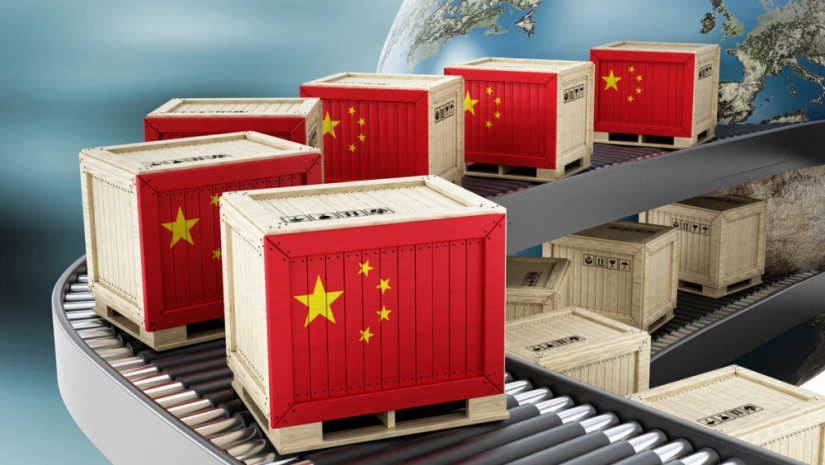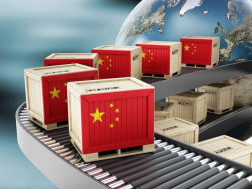China’s exports contracted in June at the fastest pace since the start of the Covid-19 pandemic, as high inflation in key developed markets and geopolitics hit global demand.
Thursday’s trade data release is yet another indication that China’s leaders will not be able to entirely count on external factors in reviving the faltering growth momentum in the world’s second-largest economy. The decline in June imports was also more severe than expected, suggesting local demand is waning.
“Latest data in the developed countries show consistent signals of further weakness which will likely put more pressure on China’s exports in the rest of the year,” said Zhiwei Zhang, president and chief economist at Pinpoint Asset Management.
“China has to depend on domestic demand,” he added. “The big question in the next few months is whether domestic demand can rebound without much stimulus from the government.”
The dollar value of China’s exports plunged 12.4% in June from a year ago, customs data showed Thursday. This is a far bigger drop than expectations for a 9.5% decline in a Reuters poll and the 7.5% annual decline in May. The percentage decline was the biggest that the world’s second-largest economy has recorded since February 2020.
Imports declined 6.8%, in June from a year ago, also worse than expectations for a 4% decline and the 4.5% annual decline in May.
China’s trade still faces rather great pressure in the second half of the year, partly due to high inflation in developed countries and geopolitics, Lu Daliang, a spokesperson for China’s customs bureau, said at a press conference Thursday.
Growing divergence
Still, the customs bureau pointed to a growing divergence in China’s trade, as trade with economies in Southeast Asia and its “Belt and Road” partners outperforming trade with the United States and the European Union.
China and the Association of Southeast Asian Nations are in negotiations to deepen a free-trade area partnership and full implementation of the Regional Comprehensive Economic Partnership, a trade bloc backed by China that includes Australia, Japan, South Korea, New Zealand and the 10 ASEAN member states, China’s top diplomat Wang Yi said Thursday at an ASEAN foreign ministers’ meeting in Jakarta.
China’s exports to the U.S. plunged by 24% in June to $42.7 billion from a year ago, while imports fell 4% to nearly $14 billion, according to CNBC calculations of official data accessed via Wind Information.
China’s exports to the 10-member ASEAN bloc fell by 17% to $43.3 billion in June from a year ago, while imports fell by 4% to $34.1 billion, the data showed.
China’s trade with “Belt and Road” countries slowed to 9.8% growth in the first six months of the year from a year ago, down from a 13.2% pace in the first five months of the year, official data showed.
Official figures Thursday also showed the combined value of China’s trade stood at $77.4 billion with ASEAN in June, a larger sum than China’s trade value with the EU at $68.8 billion and the U.S. at $55.7 billion.
“But the good news is that the worst of the decline in foreign demand is probably already behind us,” said Zichun Huang, China economist with consultancy Capital Economics.
“Recessions still loom over developed economies, but these are likely to be mild and have only limited impact on Chinese exports. Meanwhile, shipments of green technology, including Chinese-made EVs, batteries and solar panels, may continue to grow rapidly, helping exports return to growth,” Huang added.
Domestic demand
“Looking ahead, the headwinds facing the external sector remains strong which calls for policy support towards the domestic demand,” said Zhou Hao, an economist at Guotai Junan International.
China’s leaders have signaled they are likely to be judicious and targeted in their policy support. Last week, Chinese Premier Li Qiang pledged to introduce targeted and coordinated policy measures and to implement them in a timely manner to stabilize growth, ensure employment, and guard against risks.
Li also stressed the importance of an effective mix of policies, given that China is in a critical economic recovery and industrial upgrading period.
Late on Monday, the People’s Bank of China and National Financial Regulatory Administration said in a joint statement they were extending loan relief for some developers, stressing their aims were to ensure homes under construction could be delivered.
China’s annual producer prices sank for a ninth-straight month in June, while consumer prices remain unchanged, official data showed Monday, as the Chinese economy tethers on the verge of deflation — pointing to the depth of challenges in reviving demand and revitalizing growth to meet its stated growth target of around 5%, CNBC reports.
















